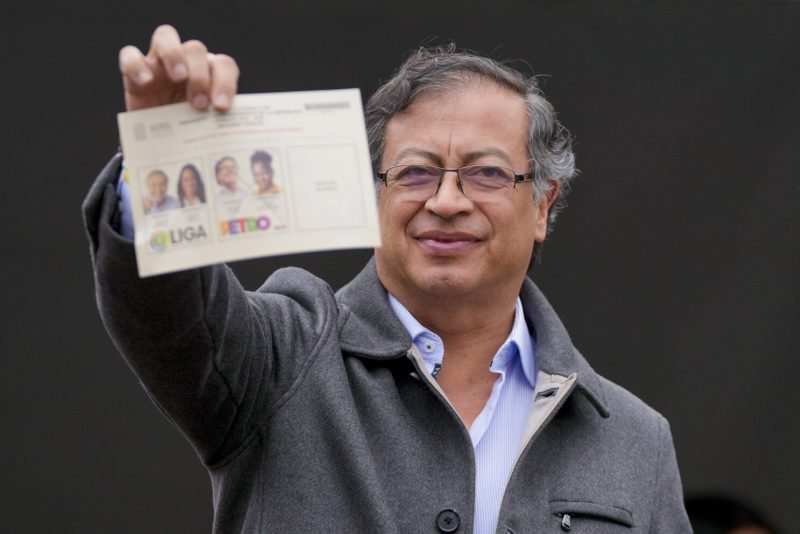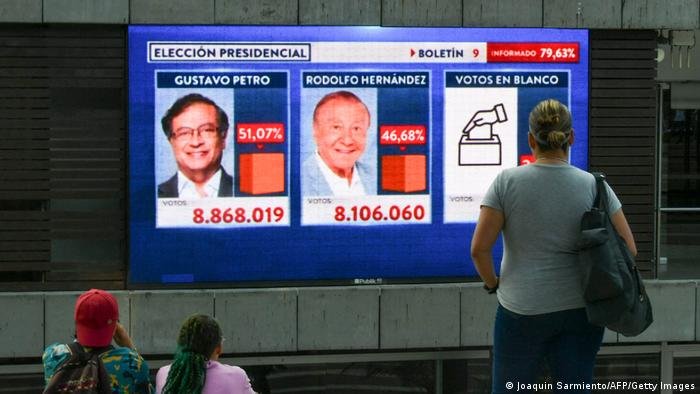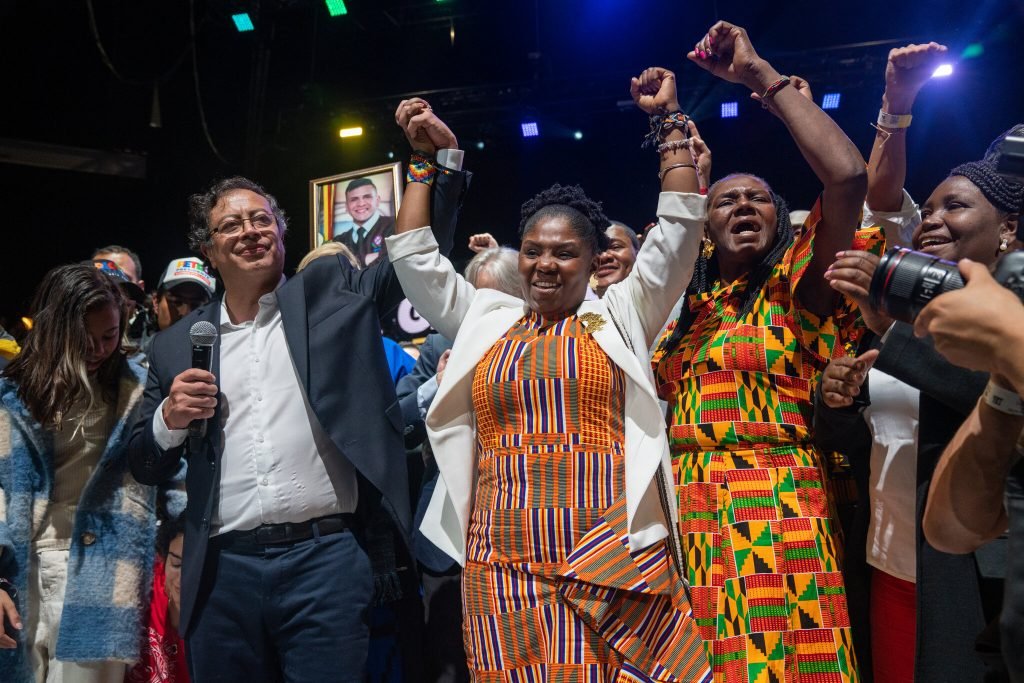Colombia’s leftist president is all set to challenge US hegemony

The leftward turn in Latin America is continuing with the historic win of Gustavo Petro, the former guerrilla fighter and President-elect of Colombia. He will be the first leftist president of Colombia. As he said before the victory on June 19, his country has voted for change.
Petro has been hitting the headlines across the globe since the results were announced because while many countries have become extremely capitalist under the banner of democracy, Colombia, in South America, has embraced the leftist regime, thanks to young voters. At least a third of the total voters are under 28 years of age. Petro did not witness a landslide victory, but it was a historic one. His vote share was 50.5% of the vote in the second round of presidential polls held on June 19. He trounced his millionaire rival and independent candidate, Rodolfo Hernande. Ivan Duque Marquez, who has been a member of the Democratic Centre Party since 2018, will be replaced by Petro, whose regime will take effect in August.
According to the United Nations, there are 33 countries in Latin America and the Caribbean. And, among them, Brazil, Mexico, and Colombia are the most populous countries. Petro’s impressive victory again points to the fact that South Americans are opting for the left. After Peru, Chile, and Honduras recently shifted to the left, it is now the turn of Colombia. And, definitely, this is not palatable to the US, which has been directly and indirectly creating unrest in Latin America.
Colombia began seeing anti-establishment protests in April 2021 against higher tax imposition during the COVID-19 pandemic, an upward trend in unemployment (11%), corruption, a widening fiscal deficit, and the attempt to push privatisation of healthcare, among other things, by President Marquez. Poverty levels have reached 40%, earning Colombia the dubious distinction of being one of Latin America’s poorest countries. This is the situation despite Colombia being an ally of the US. The youth were disenchanted and angry with the ruling party. Before the elections themselves, a survey had pointed out that not less than 68% of Petro’s supporters were in the age group of 18–24 years.

It was a foregone conclusion that the 40-year-old Francia Marquez, the vice president-elect and the 62-year-old Petro’s running mate, would win. She is the first black person to occupy the post. A Colombian like Petro is a human rights and environmental activist besides being a lawyer. Her humble background and commitment to society at large appealed to the young.
Petro’s life in the public sphere is full of struggle. He is an economist, a firebrand politician, a former guerrilla fighter, and a senator. He was part of the M-19, the urban guerrilla outfit. It was established in 1970. It tried to gain power through violence. Petro was jailed for illegal arms possession. He had actively participated in movements of students and artists who fought against the establishment. The M-19, formed by university students and activists, including an artist, was deactivated in 1990. But now it has been resurrected as a political party. But it has shaped Petro, the first left-wing president in the history of Colombia. He had always raised his voice against corruption and violence by right-wing parties. His political ideology (democratic socialism) may show a favourable bias toward guerrillas while in office, as his opponents fear.
The Pink Tide, an indicator of moderate socialist ideas in Latin America, helped Petro and his deputy sail through, even in a politically conservative society like Colombia. He has good administrative experience as he was elected mayor of Bogota City, the capital of Colombia, and a senator. In his third attempt, he has made it to the president’s post.
How different would Petro be in a globalised era? The days to come will answer this question because the country is yet to witness his lofty visions being implemented. He wants to reduce poverty and inequality. This is usually the stated aim of all political parties. He wants to reform the pension, tax, and health systems, besides agriculture. He wants to give free higher education and, foremost, he wants to tax the rich and those who are into mining natural wealth. To implement his agenda of pro-poor, he wants to establish a Ministry of Equality. He doesn’t want Colombia to depend on fossil fuels. Therefore, no new oil extraction projects would be allowed. He wants to implement the 2016 peace deal with FARC, the revolutionary armed forces of Colombia, and engage in talks with the National Liberation Army (ELN), Columbia’s largest leftist guerrilla group.
The question now is how far Petro is willing to go to impose his extreme left agenda. He is not a free man to implement his agenda in toto. The conservatives have a majority in Congress, and Petro’s party is not numerically strong. He can’t legislate without the consent of the opposition, which is a combination of centrists and extremely right-wing. His political position is precarious. There may not be much room to show his one-upmanship.
Whether the Columbians would be disappointed or otherwise, Petro would be a challenge for America. To date, Colombia has been a strong ally of the US. Recently, the US made Colombia a “non-NATO ally.” The US influence on Colombia is so great that the latter has taken drastic action to cut down on the production and sale of cocaine. Colombia has been destroying coca as per its agreement with the US. In March 2018, both countries came to an understanding to reduce by half the production of cocaine and the cultivation of its raw material in the South American nation within five years.
According to the US Drug Enforcement Administration, coca leaf cultivation occurred in 188,000 ha of Colombia in 2016. Cocaine production was not less than 910 metric tons.The United States intends to reduce cultivation and production by 50% by 2023.While Colombia is one of the leading producers and traffickers of cocaine, the US is the main consumer of Colombian cocaine. The US is providing both military and financial aid to fight the illegal drug market. The US’s annual aid is not less than $400 million to Colombia.

With a lack of economic opportunities, poor farmers are into the cultivation of coca. The plant exclusively grows in parts of South America, and Colombia is the main producer of illegal cocaine, along with Peru, Bolivia, and Chile. For decades, Colombia has remained the leading producer of coca. The coca market is run by guerrillas. It is considered an illegal trade. While the US is fighting against the drug consumption problem, it also wants Colombia to be a drug-free country.
Petro, unlike his predecessors, is not for halting the cultivation of coca as that would have a deep impact on poor farmers. He’s for legalising marijuana. He doesn’t want to destroy the crop through aerial fumigation or forcibly stop the cultivation as being done now at the dictat of the US. He has already promised the people that he would have a second look into the collaboration with the US on the drug issue. He also wants to revisit the bilateral Free Trade Agreement with the US to make it more viable for his country. He may get support from other Latin American countries that are questioning the US war on drugs.
It is not that the US has been successful in its war against drugs. It has legalised recreational cannabis in 19 states. Drugs are a huge business in the US, which the capitalists are not ready to give up. Drug prohibition in wealthy countries comes at the cost of developing countries. Processing cocaine is very cheap but sold for a very high price. For example, in Colombia, processed cocaine may not cost more than $1500 to $2000 a kg but is sold in America for as high as $70,000. The US has not been able to take hard decisions about stopping synthetic drugs, which are sold at a cheap rate. Being a leftist, Petro is bound to take the US head-on on the drug business.
Till now, Colombia has been with the US when it comes to opposing the leftist government. A fine example is Venezuela, a South American country that is facing a severe political and humanitarian crisis besides the economic sanctions imposed by the US. The US has cut diplomatic ties with the Venezuelan government led by President Nicolas Maduro, who has a rich trade union background and belongs to the United Socialist Party. Juan Guaidó, the opponent of Maduro, is a self-declared interim president of Venezuela. Enjoying the support of the US, ‘political centrist’ Guaido is operating from Colombia. The forces trying to topple the Maduro government have made Colombia their base.
The leftist Petro is bound to curtail the use of his motherland by the US to create more unrest in Venezuela. He is bound to support the Maduro dispensation and directly question the interventions by the US. Even the socialist governments in Cuba (Caribbean) and Nicaragua (Central America) are facing the wrath of the US in the form of sanctions. Petro’s victory is bound to boost the morale of the Latin American countries which have become poorer due to the economic sanctions of the US.
Petro is here to question the dominance of the US. The Pink Tide is a binding factor for the countries which are driven by their leftist leaders to accept the US’ imposition of rightwing governance. The youth of Colombia have stood by Petro. His survival depends on the promises he has made to improve the economy. It is a huge challenge for him because ideologies no more work in politics.


















